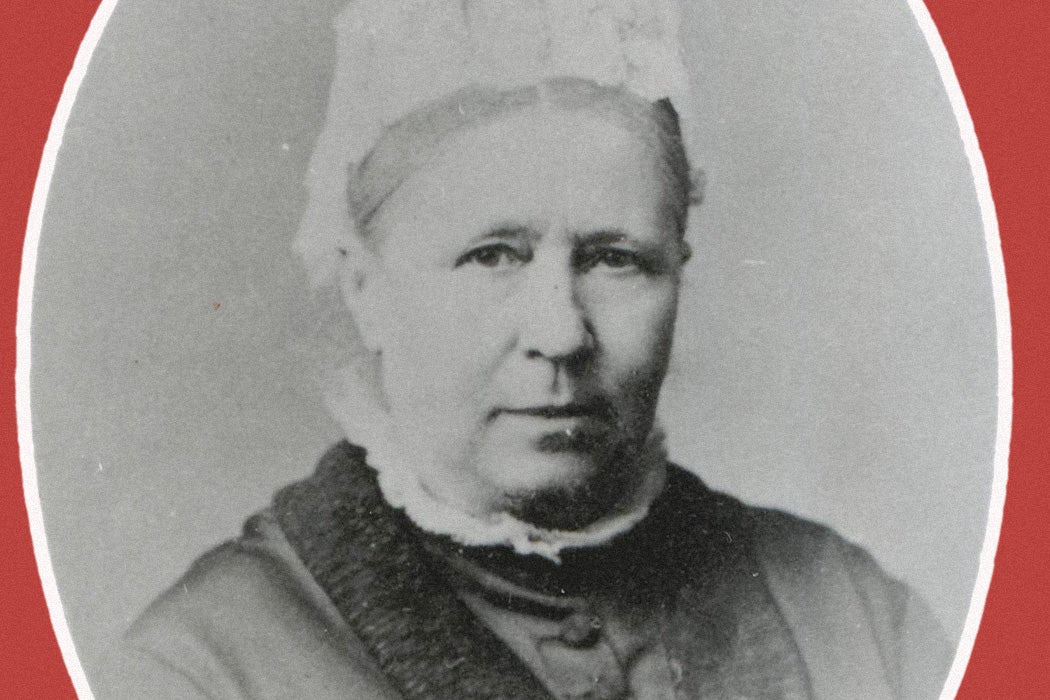They met as girls in boarding school. Future author Charlotte Brontë (1816–1855) bonded with Mary Taylor (1817–1893), the daughter of a cloth manufacturer, at the Roe Head School in West Yorkshire, England, where they were both pupils. Beyond the tight-knit circle Brontë formed with her siblings, Emily, Anne, and Branwell, the relationship she maintained with Taylor would be one of the most formative and intellectually rewarding of her life.
Taylor was a resource and an inspiration as well as a friend. In 1840, finished with boarding school, she set off on a trip across Europe, determined to partake in the privilege of “The Grand Tour” so enjoyed by her male contemporaries. The detailed letters she wrote to Brontë about the fine art she saw and the interesting people she met drove Brontë half-mad with jealousy and wanderlust. Taylor’s move to New Zealand in 1845 to start a business was also documented for Brontë’s reading pleasure. The letters were a peephole into a world outside of Haworth Parsonage, the Brontë family home.
Crackling with insight, the letters would eventually shake Brontë out of her quiet and comfortable countryside existence and move literary history forward. As Juliet Barker describes, it was because of Taylor’s influence that Brontë and her sister Emily moved to Brussels in 1842 to take up residency at the boarding school run by Constantin and Claire Zoë Héger. Brontë’s experiences in Brussels—education, heartbreak, and the personal journey into maturity alike—would provide material for all four of her novels: The Professor, Jane Eyre, Villette, and Shirley. Arguably, Taylor was the second mother, or at least the honorary aunt, of all four books.
However, as noted by English literature scholar Jane Stafford, the Brontë-Taylor friendship wasn’t without difficulties. Brontë brought her own expectations to correspondence, which were
strongly reflected in her correspondence with Taylor. Letter-writing is a genre which is closely constrained by the expectations of its readers. The strategies that this form exhibits when confronted with new experiences are displayed not just in Mary Taylor’s letters to friends and family in England, but in the letters written among those friends who attempt to interpret, reassure and familiarise her experience by locating it in some recognisable literary discourse.
Stafford writes that the letters were “revised by all the participants in transmission” in order to make Taylor’s descriptions of her distant life conform to the desires of Brontë and her other readers. Specifically, Taylor’s depictions of her life in New Zealand were judged “inappropriate to the moral tone with which [Taylor’s] home-based friends wish to invest her experience.” Instead of the carefree, even “flighty” character sensed from the letters, Brontë hoped Taylor would embrace what Stafford describes as “a novelistic stereotype of the Victorian heroine—purity, reticence, self-abnegation and moral guardianship, laced with a strong sense of masochistic suffering.”
Taylor accepted none of those values. In fact, she lamented Brontë’s lack of independence, her reluctance to leave home, and, as Stafford quotes, her “sacrifices to that gloomy old man,” i.e., the Brontës’ father. “If Charlotte had left home and made a favour of returning, she wd [sic] have got thanks instead of tyranny,” Taylor wrote after Brontë’s death.
Weekly Newsletter
Perhaps not surprisingly, differences in philosophical opinions would eventually put a damper on the women’s friendship, but not before Brontë began to make her mark on the literary world. As historian Cree LeFavour writes, “On 4 September 1848, Charlotte Brontë wrote her friend Mary Taylor to report that ‘Jane Eyre had had a great run in America.’”
So the friendship served a purpose, at least for Brontë, nudging her to write about strong, smart women who faced life head-on. Though not quite seeing eye-to-eye on how to live as an independent woman and author in the nineteenth century, Brontë and Taylor were able to reconquer British colonies (or former British colonies), each in her own manner.







